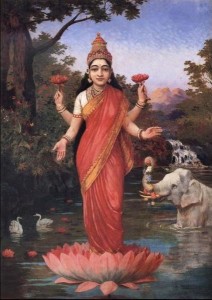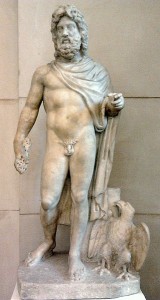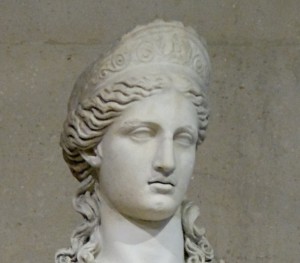


Tag: juno
The Jupiter Stone
May 17, 2013 The god Jupiter has occasionally appeared to me over the years, and I have found his presence surprising for two reasons. The first is that he surely understands that I am a feminist, and a Dianic at that, and am therefore rather miffed about the role his cult has played in the suppression of matrifocal religion. The second thing that has surprised me is that Jupiter’s energy has not seemed offensive and thuggish. He looks stocky and muscular, with an impressive amount of hair and beard, but his energy feels solid yet gentle.Jupiter is considered the Roman equivalent of the Greek god Zeus, the father god of the thunderbolt, who rules the pantheon. He is also the namesake for the large red planet, considered in astrology the planet of good fortune. Some scholars say that the Indo-European Roman Jupiter became merged with Zeus due to Greek influence in late classical times. Others say that an Etruscan god Tinia, who may himself have been drawn from Greek influence, became merged with the Roman Jupiter. Still others say that both Jupiter and Zeus are forms of a proto-Indo-European supreme sky father deity. An alternate idea is that a pre-Indo-European god of unknown name became merged with Jupiter after Indo-European conquest. None of these hypotheses are exclusionary: a proto-Indo-European Sky Father may have merged with prominent local gods in the Greek and Roman peninsulas, later becoming merged again, with another god Tinia thrown into the mix during a period of Etruscan influence.There is not much written for the lay reader on the earliest form of Jupiter. Most people simply do not find early Roman religion very interesting. We do know that his earliest known shrine was southeast of Rome and pre-dated Rome, and that a confederation from the Latin cities convened there for ceremony twice a year. Stewart Perowne says of Jupiter’s temple in Rome, “It is rather a shock to find that he was neither godlike nor human: he was just an old stone, Jupiter Lapis.” But now my interest is piqued. Here we have the material connection, the fundamental source in nature.Jupiter Lapis “the old stone” oversaw both individual oaths and the ratification of treaties. Perowne asserts that this “goes back to the neolithic days, perhaps even before them . . . When the metal-users arrived they associated these venerable and rather terrifying flints with the greatest deity they knew, the god of light, Jupiter, who among other functions was the punisher of perjurors.”
The god Jupiter has occasionally appeared to me over the years, and I have found his presence surprising for two reasons. The first is that he surely understands that I am a feminist, and a Dianic at that, and am therefore rather miffed about the role his cult has played in the suppression of matrifocal religion. The second thing that has surprised me is that Jupiter’s energy has not seemed offensive and thuggish. He looks stocky and muscular, with an impressive amount of hair and beard, but his energy feels solid yet gentle.Jupiter is considered the Roman equivalent of the Greek god Zeus, the father god of the thunderbolt, who rules the pantheon. He is also the namesake for the large red planet, considered in astrology the planet of good fortune. Some scholars say that the Indo-European Roman Jupiter became merged with Zeus due to Greek influence in late classical times. Others say that an Etruscan god Tinia, who may himself have been drawn from Greek influence, became merged with the Roman Jupiter. Still others say that both Jupiter and Zeus are forms of a proto-Indo-European supreme sky father deity. An alternate idea is that a pre-Indo-European god of unknown name became merged with Jupiter after Indo-European conquest. None of these hypotheses are exclusionary: a proto-Indo-European Sky Father may have merged with prominent local gods in the Greek and Roman peninsulas, later becoming merged again, with another god Tinia thrown into the mix during a period of Etruscan influence.There is not much written for the lay reader on the earliest form of Jupiter. Most people simply do not find early Roman religion very interesting. We do know that his earliest known shrine was southeast of Rome and pre-dated Rome, and that a confederation from the Latin cities convened there for ceremony twice a year. Stewart Perowne says of Jupiter’s temple in Rome, “It is rather a shock to find that he was neither godlike nor human: he was just an old stone, Jupiter Lapis.” But now my interest is piqued. Here we have the material connection, the fundamental source in nature.Jupiter Lapis “the old stone” oversaw both individual oaths and the ratification of treaties. Perowne asserts that this “goes back to the neolithic days, perhaps even before them . . . When the metal-users arrived they associated these venerable and rather terrifying flints with the greatest deity they knew, the god of light, Jupiter, who among other functions was the punisher of perjurors.”
The Origins of Candlemas
February 1, 2013

